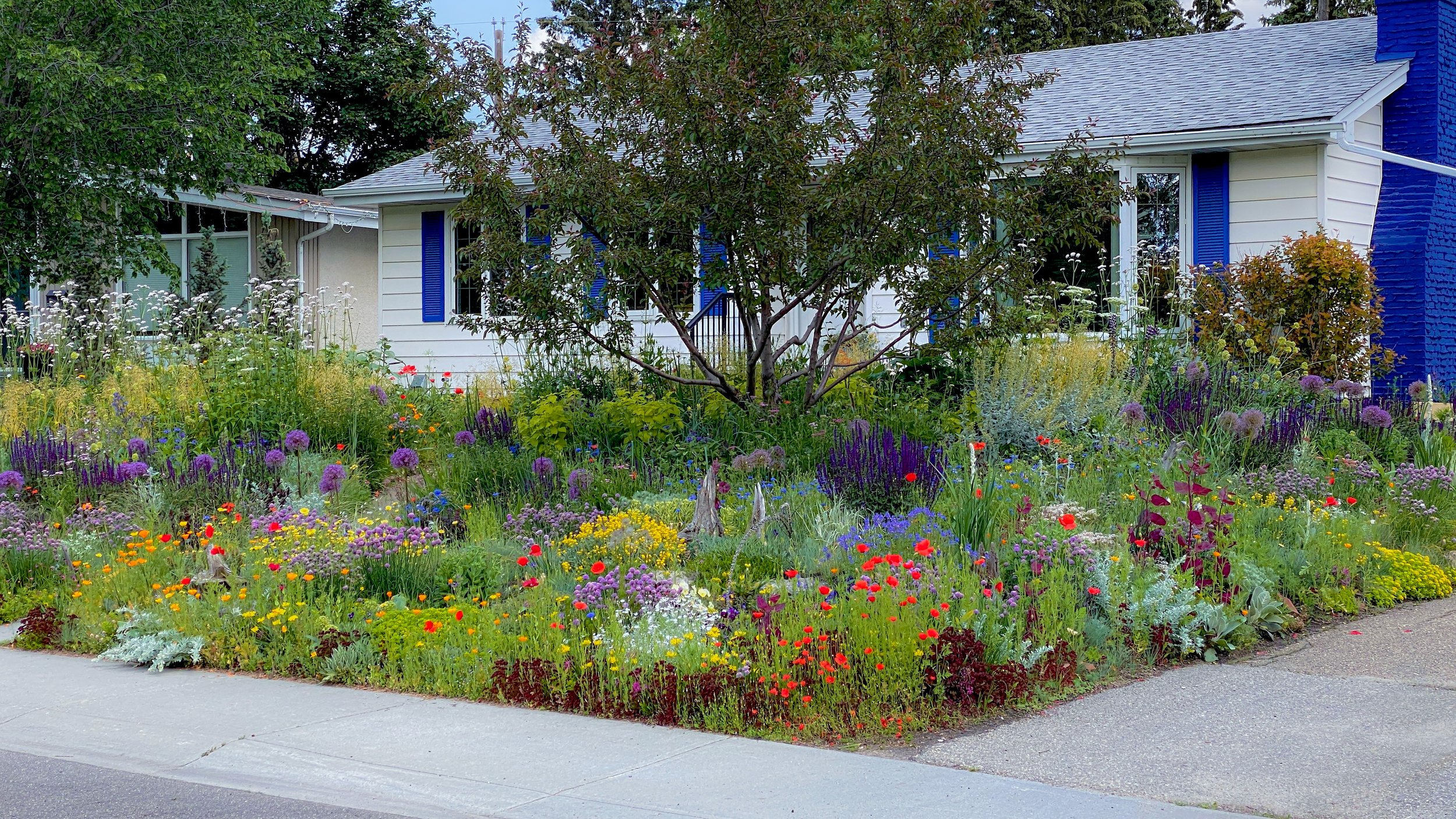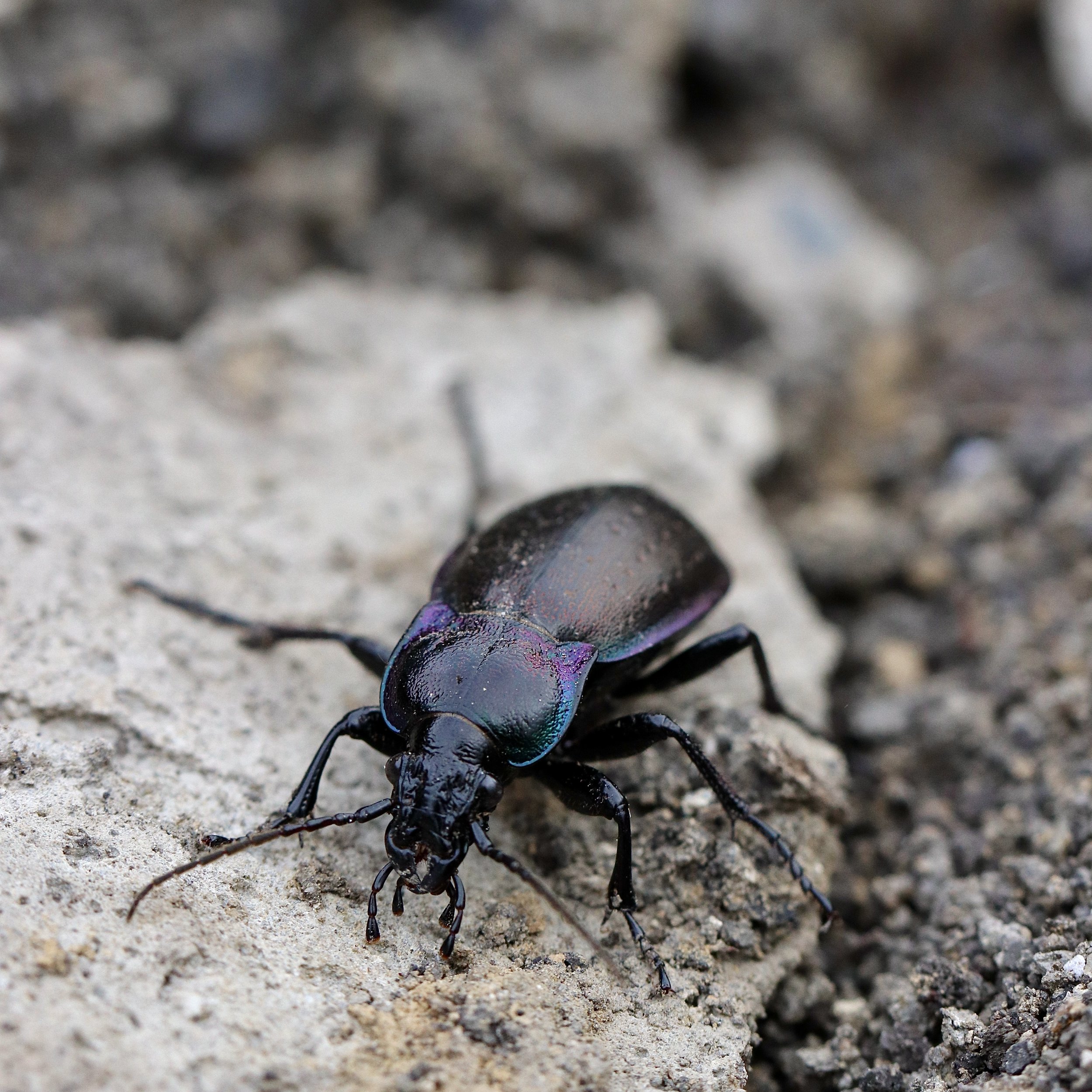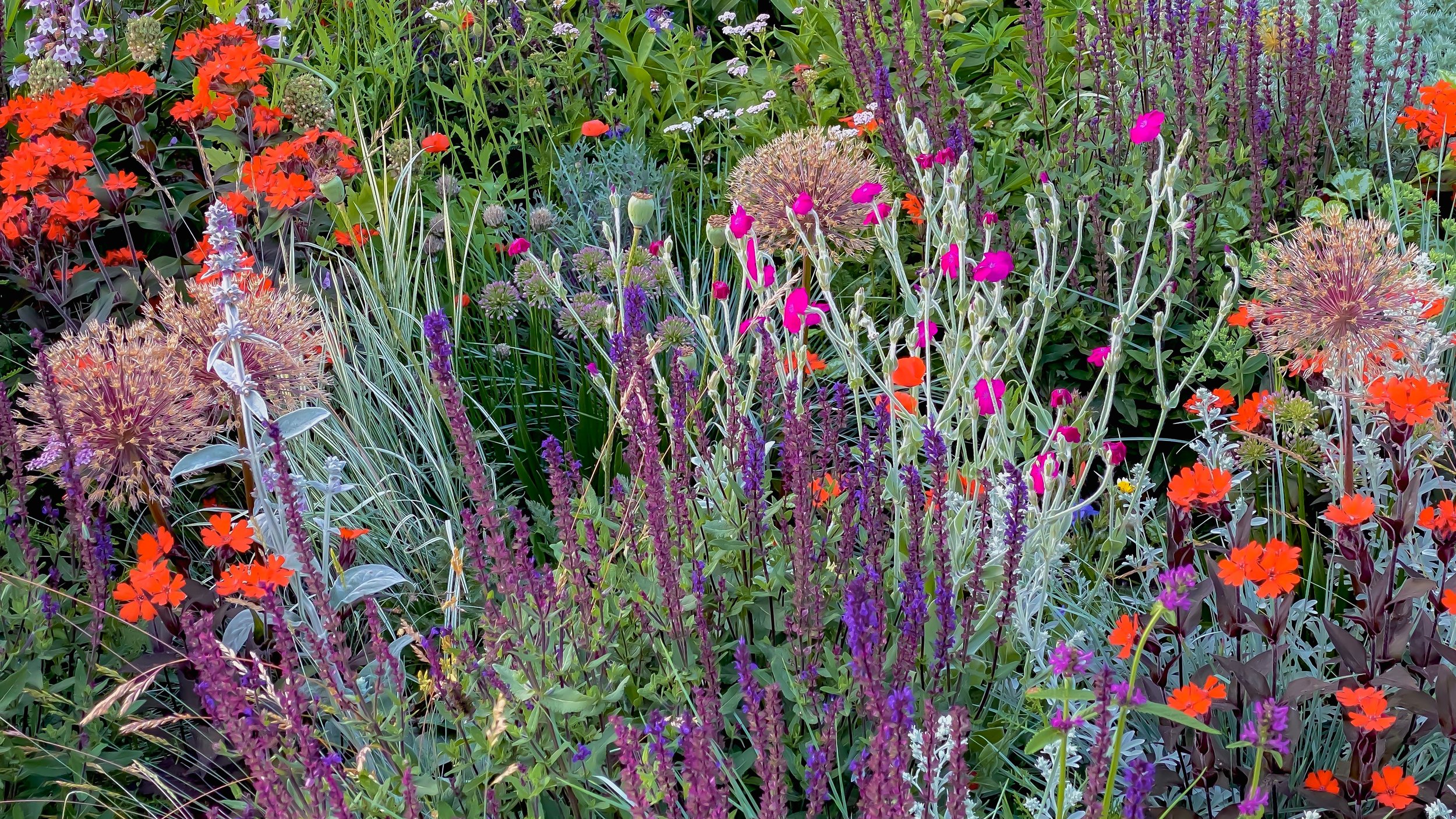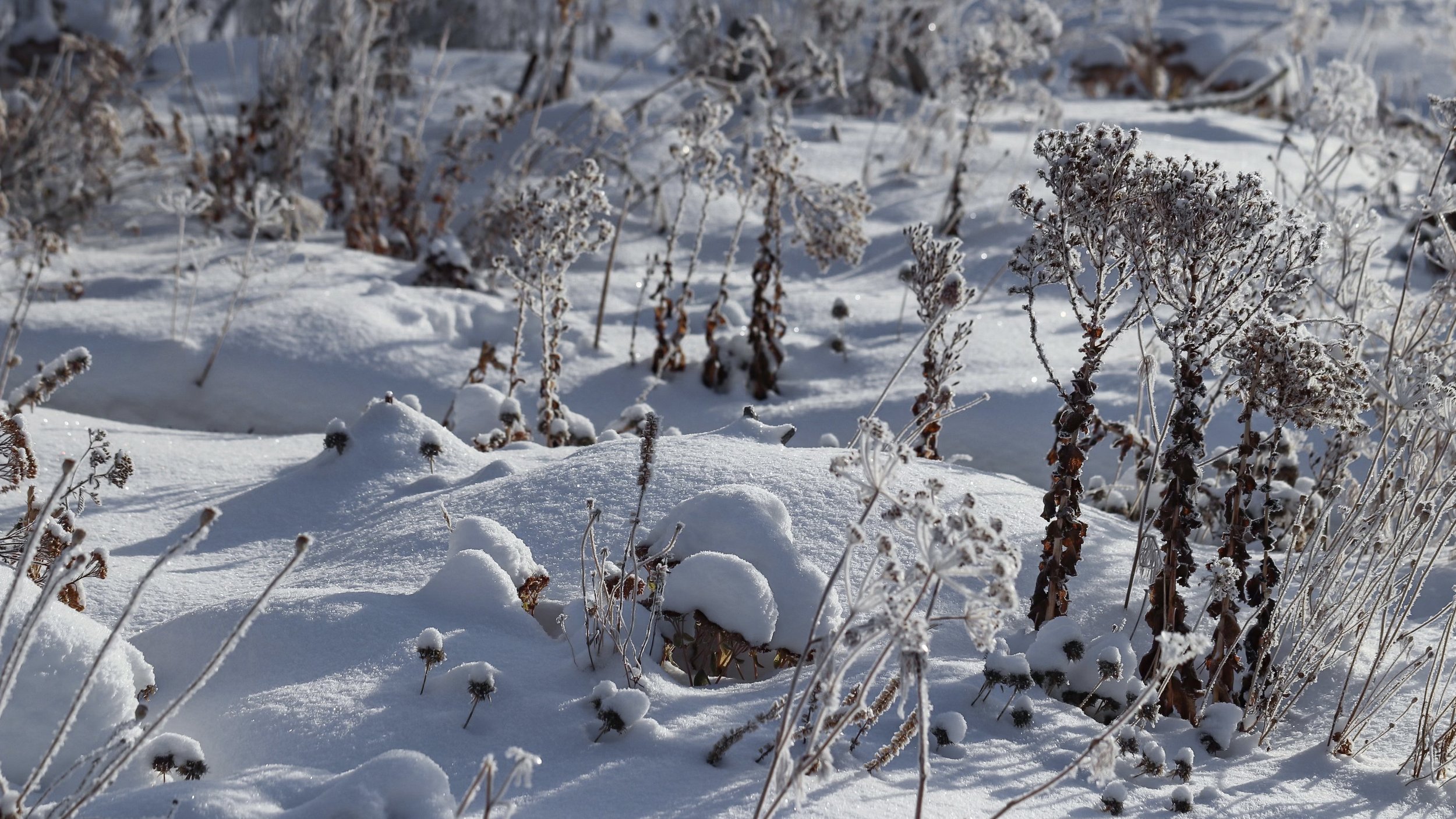THE HANNEMANN GARDEN
At first glance, the Hannemann Garden in Alberta, Canada is a boundary-pushing example of the creative potential our suburban spaces hold. A borderless, diverse, and tightly planted little paradise that rises and falls with the extremes of the northern prairie seasons.
Below the surface (quite literally), its sibling curators invite us to explore planting on a deeper level - elevating plants, ecology and cultural considerations to the top of the pile above a purely design-led vision.
I found the words and perspectives of Nathaniel and Claire Hannemann widened the scope of my own ideas on how I approach my little piece of earth, expanding the concept of gardening beyond its traditional parameters.
I hope this feature will inspire you too.
Julia xo
Words and images by Nathaniel and Claire Hannemann.
Garden profile
GARDEN: The Hannemann Garden
curated siblings, Nathanial and Claire Hannemann
LOCATION: amiskwaciwâskahikan ᐊᒥᐢᑲᐧᒋᐋᐧᐢᑲᐦᐃᑲᐣ - meaning Beaver Hills House in the Cree language
Edmonton - Alberta, Canada
Treaty Six Territory
SIZE: approx. 300 sqm
ENVIRONMENT: Northern North American prairie
Canadian Cold Hardiness Zone 4, USDA Cold Hardiness Zone 5.
Extremes of -40°C to +38°C.
Largely in full sun and semi-arid conditions.
Planting in black chernozem, the best agricultural soil.
@hannemanngarden
Siblings Nathaniel and Claire Hannemann.
“I prefer plants to have a large degree of autonomy to express their intrinsic behaviors and relationships to the worlds around them. I love plants that seed and spread and an associated ecology that is biodiverse, dynamic, and allowed to evolve. Spontaneity and detail are characteristics I relish. And to top it all off, I love seeing the invertebrate life that flourishes all throughout the spaces I have co-created. ”
The Hannemann Garden is a themed garden with various spaces and zones.
The front garden’s planting is composed primarily of the Front Meadow containing three zones that essentially organize plants by their height and level of aggressiveness. This meadow is experimental, containing over 125 plant species. There are innumerable bones, rocks, concrete blocks, pavers, stumps and other pieces of wood for structure and habitat complexity. We also have a small patio and raised beds where we grow food plants.
The back garden’s planting differs significantly from the front. It contains more competitive plants and exotic specimen plants that we overwinter indoors (including Brugmansias and cacti). There are innumerable potted plants, a xerophytic plant collection, a pathway with a distinct vista and a large raised bed for food.
Patio garden in mid summer
NATHANIEL: I have always loved plants. It will forever be a mystery to me why everyone isn’t obsessed the way I am. How can you not love plants? I guess the world is intrinsically diverse and not everyone can love plants.
Growing up, my sister Claire and I spent a great deal of time visiting natural areas with our parents. We saw many habitat types with ecologies that included native plants and innumerable arthropods. We would go on walks, catch insects, pick flowers, and learn things about trees and the stars. And we had the time of our lives. Claire and I reflect on these experiences regularly and we can say with certainty that this was the most formative and affirming period of our lives.
When I was 10 years old, our parents separated. I became a bit lonely and simultaneously obsessed with potted house plants. I experimented and learned a lot, growing pretty much anything I could get my hands on. In my early twenties, I studied production horticulture in college. It was around this time that I transitioned to the outdoors, growing potted plants on my patio. The plants at this time were primarily exotic “leafy” annuals like Coleus, Taro, Iresine, Oxalis, Tradescantia. This is where the Hannemann Garden began.
Soon after I became interested in growing plants in the soil. Gardening outdoors can be very forgiving. There is rain and wind that cleans your plants, everything grows faster and there are natural predators that take care of insect diseases. Currently, after about a decade in this home, every outdoor surface is covered with plants!
After studying landscape architecture, I came to understand the importance of a design vision. I still love potted plants but I am a bit ruthless in that those plants must contribute to an overall garden vision and experience.
CLAIRE: The beginning of my journey into it all starts with Nathaniel.
I owe Nathaniel every bit of my awakening to the fascinating world of plants. When you’re around someone as nerdy and passionate as he is, it’s going to rub off on you.
It was gentle in some ways, other times it was like he grabbed me by the hand and dragged me into this world, yelling, “CLAIRE!!! Do you get it yet??? LOOK HOW AMAZING PLANTS ARE!!!” And, yes, I think I get it now, haha.
I’m immersed in plants and plant-related work every day. I work in horticulture; I read books and listen to podcasts about plants and ecology; I’ve fallen in love with photographing plants, plant communities, and the invertebrate life sustained by them; I think regularly about how to communicate a deep appreciation for plants. It’s always so interesting how one thing leads to another.
My consistent practice of photography in our garden has led me to be entranced by the other forms of life that live here now. As I’ve been training myself to look at details, the more I see, and I want to know what I’m looking at. I’m learning about native bee species, their behaviors and the health of their populations. (I discovered recently that one of the bumblebees I photographed is actually a rare species, Bombus terricola. How cool is that!?)
I’m learning about different species of spiders and how they like to hunt. I’m learning to identify caterpillars, beetles, and true bugs. I’ve learned to love seeing holes in the leaves of plants. I’m understanding more and more the many kinds of relationships in and around the garden. We’ve even gotten to know all kinds of people in our neighbourhood and across the city who come by to look at the garden and talk to us. And all this brings me immense and profound joy.
“I’m understanding more and more the many kinds of relationships in and around the garden. We’ve even gotten to know all kinds of people in our neighbourhood and across the city who come by to look at the garden and talk to us. And all this brings me immense and profound joy. ”
AN ETHICAL FRAMEWORK AND THE FUTURE OF GARDENING
Claire: To truly begin, Nathaniel and I must acknowledge that we are settlers here in in what is currently called Canada, in amiskwaciwâskahikan ᐊᒥᐢᑲᐧᒋᐋᐧᐢᑲᐦᐃᑲᐣ, Edmonton, Alberta, Treaty Six Territory.
This acknowledgment is important for us in everything we do, and gardening is no exception. The more we explore the history of this place and of settler colonialism, the more we realize the importance of humility, responsibility, and reciprocity.
This raises a lifetime’s worth of questions, like what does it mean to be an uninvited guest in Indigenous territory? What is the meaning of Treaty? What does it mean to live in good relation? How do we fulfill our responsibilities to the Indigenous peoples of this place, to the land, to the more-than-human world? What can other cultures teach us? What kinds of harmful practices can we acknowledge and try to unlearn? How can we apply these things to our gardening? (When I say “we” here, I am referring specifically to myself and Nathaniel, though more and more people are also having these conversations.)
In one way we’re simply exerting our influence over the small patch of land we have, by painting it with plants for our pleasure. Our love of art, design, colour, experimentation and that horticultural itch all coming together to create a rich, ever-changing, living tapestry. But that can’t just be all that there is.
Settler colonial culture doesn’t provide us with much of an ethical framework. So we have to dig deep and work hard on self-awareness, on making ourselves uncomfortable, on interrogating status quo thinking. We end up asking even more questions like, what would nature do here? What wouldn’t nature do here? Why? And what actually is “nature”? Aren’t humans a part of it? What is worth doing? How shall we live here? What are our obligations and how do we embody them? All of this applies heavily to us as individuals and communities. It has particular resonance for me and Nathaniel in our gardening practices since gardening is now such an inextricable part of who we are.
Claire Hannemann
We hold dear the teachings from Robin Wall Kimmerer that she has shared in her book Braiding Sweetgrass: Scientific Knowledge, Indigenous Wisdom and the Teachings of Plants. A lot of it is about dismantling the hierarchy of life that places humans at the top and plants somewhere near the bottom. And it’s about a generosity, reciprocity, love and kinship that we can learn from and have with plants and other more-than-humans, and from Indigenous ways of being and knowing that can completely transform our lives and the lives around us. As we realize and take more seriously the impact we have through our garden, we try to keep this top of mind.
So some of this is philosophical and maybe spiritual too. It can be hard to balance sometimes when we’re also just trying to grow things. But we think it’s important to develop an appropriate ethic. The dominant culture teaches us to treat outside spaces as if they’re just exterior rooms in need of decorating. Biodiversity is obliterated in favor of monoculture lawns and static, mulched beds. This just isn’t it.
I’m thinking here of another wise voice, Benjamin Vogt. His book, A New Garden Ethic: Cultivating Defiant Compassion for an Uncertain Future and his ongoing writings on social media and his blog are full of important lessons and calls to action.
For example, we have to consider native plants, invertebrate life, their relationships, and our powerful roles as stewards. How all these considerations make their way, or not, into each of our gardening practices is up to us. But as we all know, the planet is in crisis and so we must absolutely reclaim our obligations to each other and to the more-than-human world.
Nathaniel Hannemann
CONFLICT AND DESIGN PHLIOSOPHY
NATHANIEL: I have come to realize many of the challenges we experience within our landscapes originate primarily from a specific cultural way of relating to our internal and external worlds.
I come from a settler colonial, human-centric culture that values progress, endless growth and operates with the entitlement to conquer and destroy wild nature. These systemic ideologies are embedded within us and therefore in landscapes and the horticulture, gardening, and landscaping industries. Examples of this include what values and desires are shaped; the reliance upon fossil fuels, synthetic fertilizers, peat, single-use plastics, and cheap labour; harmful plant-hunting practices; what landscapes are constructed and sold. And this is only just scratching the surface. It has taken me years to fully see the scope and depth of this complexity.
Without going into too much detail and dissection, what I have come to realize is that people’s values underpin and support much of what is done within the landscape. Values underpin what is considered important or not, what is a problem or not, and what solutions are palatable or not. And cutting to the chase, in this settler colonial culture, the dominant culture, plants, and other lifeforms are de-centered, and local ecologies are de-centered.
So often settler colonial values limit ecologically analytical, emotional, aesthetic, and spiritual experiences, understandings, desires, and imaginations. By aesthetic I am referring to the full range of senses we possess.
I am strongly committed to plants, place, gardening and the more-than-human. I am committed to creating vibrant and resilient ecologies within the places I am privileged to be a part of. I am committed to internal and external interrogation and ongoing evolution. I am committed to a better future!
“I strongly believe that gardens are and should be plant-centric places. I think most gardeners would agree. Plants provide and are generous. They bear gifts. They are healing. They are teachers. They are habitat. Plants underpin biological life on Earth and gardens are their homes.”
THE IMPORTANCE OF PLANTS AND GARDENS
NATHANIEL: Gardens have a deep connection to the human experience. Gardening is an ancient practice predating agriculture and gardens are widely defined. Gardens embrace biodiversity and are always unique and contemplative expressions made by their owners. There are gardens that are so large and natural that many settlers would not comfortably define them as gardens. There are working gardens, power gardens and fine gardens. There are gardens in window sills and sometimes inside individual containers. There are even gardens that do not contain any living plants!
I strongly believe that gardens are and should be plant-centric places. I think most gardeners would agree. Plants provide and are generous. They bear gifts. They are healing. They are teachers. They are habitat. Plants underpin biological life on Earth and gardens are their homes.
Gardens are multi-dimensional, simultaneously being laboratories, libraries, schools, farms, habitats, stages, and temples to and of our plant relations. Gardens connect us to ourselves, to each other, to the land, to the more-than-human, to the wider world, and the universe beyond.
Lupins and chives mid Summer
DESIGN APPROACH
NATHANIEL: As an artist, horticulturist, landscape designer, and someone who deeply appreciates the natural world, I am drawn towards the power of plants and place. I am enthusiastic about plants of natural form and distribution and other landscape features that look and feel natural.
I prefer plants to have a large degree of autonomy to express their intrinsic behaviors and relationships to the worlds around them. I love plants that seed and spread and an associated ecology that is biodiverse, dynamic, and allowed to evolve. Spontaneity and detail are characteristics I relish. And to top it all off, I love seeing the invertebrate life that flourishes all throughout the spaces I have co-created.
At the University of Guelph where I studied landscape architecture, I was fortunate to meet Dr. Karen Landman who oversaw my self-directed study investigating planting and garden designers from the late 18th century to the present. During this course I learned about colonial planting design ideas and renowned individuals who push against tradition towards ever more natural planting styles. This included people like William Robinson and Gertrude Jekyll, Thomas Rainer and Noel Kingsbury. The primary knowledge I uncovered was that our current planting design zeitgeist is naturalistic planting design. This design “style” spoke to me so vehemently.
For those that don’t know, naturalistic planting design is a relatively recent planting design approach. It is not a simple aesthetic alternative to conventional planting schemes. This is a style that is willingly aligned with natural forces and processes, and borrows visually from natural plant communities - plants are arranged in organic patterns and distributions. The degree to which they appear natural or horticultural varies, depending very much on the designer or onlooker. Essentially all are mixed plantings and are managed rather than maintained. It is common to refer to the style as the new perennial movement or mixed planting.
GARDEN AS A VERB
NATHANIEL: I would describe the Hannemann Garden as a ‘verb garden’ – a habitat that is the result of specific actions and inactions. This is not a static, power garden (like Versailles or Chateau de Villandry). Things here are constantly changing. It has been said that gardens are the slowest of the performing arts; Claire and I agree wholeheartedly!
Every year we grow hundreds, sometimes thousands, of plants. We try to grow as many small plants as possible to save time, effort, water, medium, fertilizer and production space. Liners and small plugs are our ideal plant size for most new plantings. We are able to easily plant these and other larger plants with a set of wireless, electric auger drills.
We save a lot of our own seeds with most being used for in situ propagation. We also buy hundreds of bulbs each year.
We do not use any mulch. Mulch is terrible for most naturalistic planting designs. It interferes with plants’ ability to establish via seed. Our resulting plant densities are so high that effectively the plants act as a living mulch.
We water perennial-based plantings sparingly and generally only do so during times of unusually extreme heat.
“I would describe the Hannemann Garden as a ‘verb garden’ – a habitat that is the result of specific actions and inactions. This is not a static, power garden (like Versailles or Chateau de Villandry). Things here are constantly changing. It has been said that gardens are the slowest of the performing arts; Claire and I agree wholeheartedly!”
INSPIRATION
NATHANIEL: For those interested in a short overview of naturalistic planting principles, I recommend the article “Paving the way for Naturalistic Planting Design”.
For those interested in an excellent planting design book, I recommend Planting: A New Perspective by Piet Oudolf and Noel Kingsbury.
CLAIRE: For those interested in a high-level overview of the past, present and future of naturalistic planting design, I recommend Gardening in a Changing World: Plants, People and the Climate Crisis by Darryl Moore.
Our Instagram recommendations include:
Our favourite podcasts include:
Provided links to plants are chosen by Julia with no bias - simply to connect with the best imagery and information to aid the reader on that plant.
No affiliate or sponsored links are included - please beware they may contain some seasonal information from other countries that differ from the one you are in!



































